Men’s style is often overlooked or undervalued, but it plays a significant role in one’s confidence and overall image. The way a man dresses can have a profound impact on how he is perceived by others and how he feels about himself. It is not just about following trends or wearing expensive clothes; it is about understanding the basics of men’s style, building a solid wardrobe foundation, and knowing how to dress for your body type and skin tone. By mastering these elements, men can elevate their style game and feel more confident in their appearance.
Key Takeaways
- Understanding the basics of men’s style is crucial for building a wardrobe that reflects your personality and lifestyle.
- Building a solid wardrobe foundation means investing in timeless pieces that can be mixed and matched for different occasions.
- The importance of fit cannot be overstated – clothes that fit well will always look better than those that don’t.
- Choosing the right colors for your skin tone can make a huge difference in how you look and feel in your clothes.
- Accessorizing is key to adding personality and polish to your outfits, but it’s important not to overdo it.
Understanding the Basics of Men’s Style
Men’s style encompasses the way a man dresses, including his clothing choices, grooming habits, and overall aesthetic. It is a reflection of his personality, taste, and lifestyle. Men’s style matters because it is a form of self-expression and can influence how others perceive you. It can also boost your confidence and make you feel more put together and polished.
When it comes to men’s style, there are different categories to consider. Classic style refers to timeless pieces that never go out of fashion, such as tailored suits and dress shirts. Trendy style focuses on the latest fashion trends and often involves experimenting with bold colors and patterns. Casual style is all about comfort and relaxed dressing, with staples like jeans and t-shirts. It is important to determine which style category suits you best based on your personal preferences, body type, and lifestyle.
Building a Solid Wardrobe Foundation
Building a solid wardrobe foundation is essential for every man. It consists of having a collection of versatile pieces that can be mixed and matched to create various outfits for different occasions. Some essential pieces every man should have in his wardrobe include dress shirts, jeans, blazers, chinos, t-shirts, and dress shoes.
When building a wardrobe on a budget, it is important to prioritize quality over quantity. Invest in well-made, timeless pieces that will last for years rather than buying cheap, trendy items that will quickly go out of style. Look for sales and discounts, and consider shopping at thrift stores or online marketplaces for second-hand clothing. Building a versatile wardrobe takes time, so be patient and focus on acquiring pieces that can be worn in multiple ways.
The Importance of Fit in Men’s Style
| Metrics | Importance |
|---|---|
| Confidence | A well-fitted outfit can boost confidence and self-esteem. |
| Professionalism | A proper fit is essential for a professional appearance in the workplace. |
| Comfort | A good fit ensures comfort and ease of movement throughout the day. |
| Style | A well-fitted outfit enhances the overall style and aesthetic of the wearer. |
| Durability | A proper fit can extend the lifespan of clothing by reducing wear and tear. |
Fit is crucial in men’s style because ill-fitting clothes can ruin an otherwise stylish outfit. Wearing clothes that are too tight or too loose can make you look sloppy and unprofessional. It is important to find the right balance between comfort and fit.
When it comes to shirts, the shoulder seams should align with your shoulders, and the sleeves should end at your wrist bone. The shirt should be slim-fitting but not too tight around the chest and waist. For pants, they should sit comfortably at your waist without being too tight or too loose. The length should be just above the shoe, with a slight break in the fabric.
If you are unsure about your size or how clothes should fit, consider getting measured by a professional tailor. They can provide valuable advice on what works best for your body type and make alterations if necessary.
Choosing the Right Colors for Your Skin Tone
Skin tone plays a significant role in determining which colors look best on you. Certain colors can complement your complexion and make you appear more vibrant, while others can wash you out or clash with your skin tone.
To determine your skin tone, look at the veins on the inside of your wrist. If they appear blue or purple, you have cool undertones, while green veins indicate warm undertones. If you have both blue and green veins, you likely have neutral undertones.
For cool undertones, colors like navy blue, gray, and jewel tones (such as emerald green and royal purple) tend to look best. Warm undertones are complemented by earthy tones like brown, beige, and olive green. Neutral undertones have the advantage of being able to wear a wide range of colors.
Experiment with different colors to see what works best for you. Pay attention to how certain colors make your skin tone appear more vibrant and healthy, and avoid colors that make you look washed out or dull.
Accessorizing for a Polished Look

Accessories are an important aspect of men’s style as they can elevate an outfit and add a personal touch. They can also be functional, such as a watch or belt. When choosing accessories, it is important to consider the overall aesthetic you want to achieve and select pieces that complement your style.
Watches are a classic accessory that can add sophistication and elegance to any outfit. Opt for a timeless design that suits your personal taste and lifestyle. Belts should match the color of your shoes and be proportional to your body size. Hats can be a stylish addition to casual outfits, but make sure they fit properly and suit your face shape.

When it comes to jewelry, less is often more. A simple necklace or bracelet can add a touch of personality without overpowering the outfit. Experiment with different accessories to find what works best for you and complements your style.
Dressing for Your Body Type
Understanding your body type is crucial when it comes to dressing well. Different clothes flatter different body types, so it is important to know what works best for you.
For slim body types, fitted clothes can create the illusion of more bulk. Opt for slim-fit shirts and pants that accentuate your frame without being too tight. Layering can also add dimension and make you appear broader.
Athletic body types can benefit from clothes that highlight their physique. Fitted shirts and pants can showcase your muscles, while structured blazers can add definition to your shoulders.
For stocky body types, it is important to avoid clothes that are too tight or too loose. Opt for well-fitted clothes that skim your body without clinging to it. Darker colors can also create a slimming effect.
Experiment with different styles and silhouettes to find what works best for your body type. Don’t be afraid to seek advice from professionals or try on different sizes and cuts to find the most flattering options.
Mastering Business Attire
Business attire is an important aspect of men’s style, especially for those working in professional settings. It is important to understand the different levels of business attire and when to wear each.
Business formal is the most formal dress code and typically involves wearing a tailored suit, dress shirt, tie, and dress shoes. This is appropriate for formal events, job interviews, or important meetings.
Business professional is slightly less formal but still requires a suit and tie. However, the tie can be optional depending on the company culture or occasion.
Business casual allows for more flexibility and often involves wearing dress pants or chinos with a button-down shirt or polo shirt. Blazers can be added for a more polished look, and ties are usually not required.

It is important to dress professionally without sacrificing style. Opt for well-tailored suits and shirts that fit properly, and choose classic colors like navy, gray, or black. Pay attention to grooming details like clean shoes, neatly trimmed hair, and well-groomed facial hair if applicable.
Elevating Your Casual Style Game
Casual style does not have to mean sloppy or unkempt. With the right pieces and attention to detail, you can elevate your casual style and look put together even in a relaxed setting.
Layering is a great way to add depth and interest to casual outfits. Experiment with different combinations of t-shirts, sweaters, jackets, and scarves to create stylish looks. Mixing patterns can also add visual interest, but make sure the patterns complement each other and are not too overwhelming.
Invest in quality basics like well-fitting jeans, chinos, and t-shirts in neutral colors. These can be the foundation of your casual wardrobe and can be easily dressed up or down depending on the occasion.
Pay attention to footwear and opt for stylish sneakers, loafers, or boots that complement your outfit. Accessories like sunglasses, hats, and backpacks can also add a stylish touch to casual looks.
The Art of Layering
Layering is an important skill to master in men’s style as it allows you to create visually interesting outfits while also providing practicality and warmth. The key to layering is to start with lightweight pieces and gradually add heavier ones.
Start with a base layer, such as a t-shirt or dress shirt, and build from there. Add a lightweight sweater or cardigan for extra warmth and style. A blazer or jacket can be added as the outer layer to complete the look.
When layering, pay attention to proportions and ensure that each layer is visible and adds something to the overall outfit. Experiment with different textures and colors to create depth and visual interest.
It is important to remember that layering should not make you look bulky or overwhelmed by fabric. Choose pieces that fit well and flatter your body type. Layering can be a great way to showcase your personal style and add versatility to your wardrobe.
Maintaining Your Style with Grooming and Care
Maintaining your style goes beyond just wearing stylish clothes; it also involves grooming and taking care of your appearance. Good grooming habits can enhance your overall style and make you look more put together.
Regularly grooming your hair, whether it is styled or kept short, is essential for a polished look. Keep your facial hair well-groomed by trimming it regularly or shaving it off completely if desired. Pay attention to details like clean nails, well-maintained eyebrows, and fresh breath.
Taking care of your clothes is also important to maintain your style. Follow the care instructions on the labels and avoid throwing clothes in the dryer if they are not meant to be dried that way. Invest in quality hangers to prevent clothes from getting wrinkled, and consider using a steamer or iron to keep them looking crisp.
Regularly clean and polish your shoes to keep them looking their best. Pay attention to accessories like watches and belts, ensuring they are clean and in good condition.
Men’s style is an important aspect of self-expression and can have a significant impact on one’s confidence and overall image. By understanding the basics of men’s style, building a solid wardrobe foundation, dressing for your body type and skin tone, and mastering business attire and casual style, men can elevate their style game and feel more confident in their appearance. By paying attention to fit, color, accessories, layering, grooming, and care, men can maintain their style and experiment with different looks. Remember that style is personal and should reflect your personality and taste. Don’t be afraid to take risks and have fun with your style.
If you’re looking to delve into the world of men’s style, understanding the fundamentals is crucial. From choosing the right fit to mastering the art of layering, there’s a lot to learn. To further enhance your knowledge, check out this insightful article on Modern Man’s World that explores the timeless charm of men’s 60s fashion. Discover how this iconic era continues to influence modern trends and gain inspiration for incorporating retro elements into your wardrobe. Don’t miss out on this fascinating read: Men’s 60s Fashion.
FAQs
What are the basic elements of men’s style?
The basic elements of men’s style include fit, color, pattern, texture, and accessories.
What is the importance of fit in men’s style?
Fit is crucial in men’s style as it can make or break an outfit. Clothes that fit well can enhance a man’s physique and give him a polished look.
How can men incorporate color into their wardrobe?
Men can incorporate color into their wardrobe by starting with neutral colors such as black, white, and gray, and gradually adding in bolder colors such as navy, burgundy, and olive.
What are some common patterns in men’s fashion?
Common patterns in men’s fashion include stripes, checks, plaids, and houndstooth.
What role does texture play in men’s style?
Texture adds depth and interest to an outfit. Men can incorporate texture into their wardrobe through fabrics such as wool, tweed, and corduroy.
What are some essential accessories for men’s style?
Essential accessories for men’s style include a watch, belt, tie, and dress shoes. Other accessories such as hats, scarves, and sunglasses can also add to a man’s overall look.

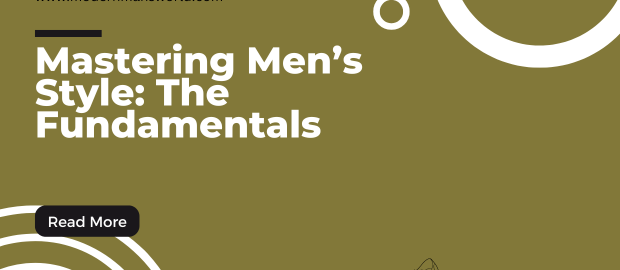
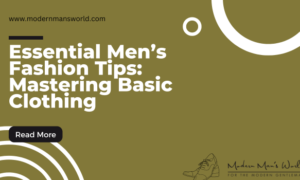
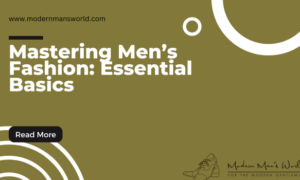
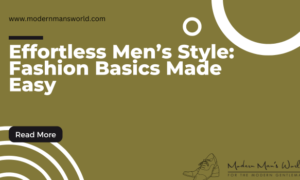
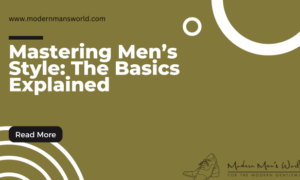
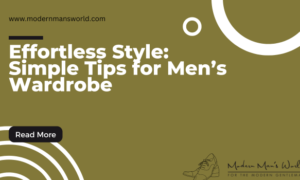
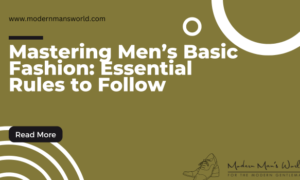
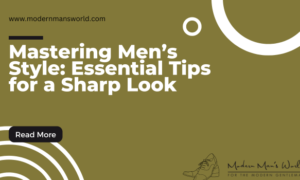






Comments are closed.